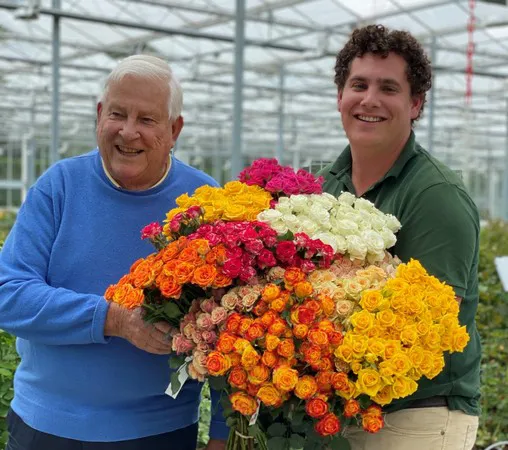At the moment, the popularity of sprayroses is increasing rapidly. This is not surprising, as the product is highly versatile with its typical trademark of multiple rose blooms growing on a single stem. Strangely enough, the sprayrose was not always that popular. This article takes you back to the early sixties, when Peter Ilsink (2nd generation) ran a tree nursery company together with his family, called ‘Darthuizen’, located in the heart of The Netherlands.
The time had come to start something new. Initially, the company had the idea of breeding a continuous-flowering, ground-covering rose variety. However, Peter also had confidence in his abilities to breed cut roses. He decided to seek advice on this from Mr. M.Sc. Van Doesburg, principal of the former testing station at Aalsmeer. Together, they reached a remarkable conclusion: the floricultural market was already acquainted with spray carnations and spray chrysanthemums, but a spray rose had not been introduced yet. From that moment on, things moved fast. Various breeders were recruited, including M.Sc. Adri van Doesum, who has been employed by the company for 32 years now. The basis for the sprayrose was taken from strong garden roses that had multiple blooms growing on one single stem. The first sprayroses, called Porcelina and Evelien, were bred in the early eighties, followed by the Lydia range. Production started to take place on a larger scale in Japan, South America, Kenya, Zimbabwe, and The Netherlands.

The revival of the sprayrose
Around 1995, the demand for sprayroses declined. The vase life was not optimal and the production was not fast enough. There were serious doubts about the sustainability of the sprayrose. In spite of these dark clouds, Peter decided to give it another chance, and his passion and love for the sprayrose triumphed. Serious investments were made to improve the transportability, production, and vase life of the sprayrose, with a goal of sustainability in the market. The assortment was expanded upon massively: ‘Innovating with patience’ as Peter calls it. More and more growers started to show interest in growing sprayroses, and around 2005, the sprayrose was well represented in the worldwide acreage of cut roses.
Nowadays, a rose assortment is unimaginable without sprayroses. The flower is still very popular for use in wedding arrangements, but simple arrangements putting a few stems on a vase are also often seen. Combining sprayroses with single flowers in a bouquet is also gaining popularity.
“The life of a rose breeder is too short”
In conclusion, the success of the sprayrose is a combination of factors such as passion in breeding, innovation, perseverance, patience, and teamwork. Rose breeding is like a high-level sport: one must always be in motion and one must keep on renewing. Furthermore, it is important not to be afraid to create trends yourself: “We always need new material,” says Peter. In his opinion, the life of a rose breeder is too short. “We are always working on developing new rose varieties, and the job is never done”. The latter is not an obstacle for Ilsink. “The passion for the rose gives us the perseverance and creativity needed for this beautiful profession.”
For more information:
Interplant
www.interplant.nl
